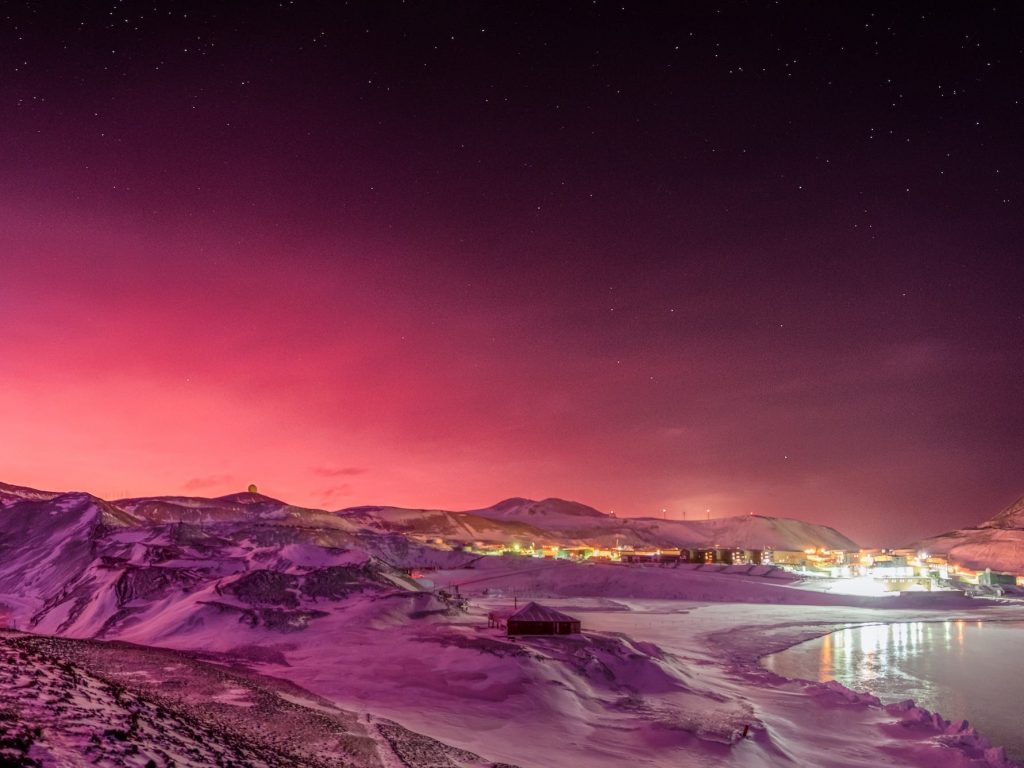- Antarctica's sky turned pink and purple last week, a stunning photo shows.
- The change is due to particles released by a volcano eruption at the start of the year.
- The blast on Tonga has been affecting skies in other countries too.
Antarctica's skies turned a spectacular pink color recently, likely because of aerosols released into the atmosphere by the an underwater volcano eruption from the start of the year.
Stuart Shaw, a science technician working at New Zealand's Antarctica Scott Base for the winter, uploaded a picture to Instagram on July 7.
"Believe it or not, I haven't edited these colors either, they are pretty much as we saw them," Shaw said, per The Guardian. "It's incredible."
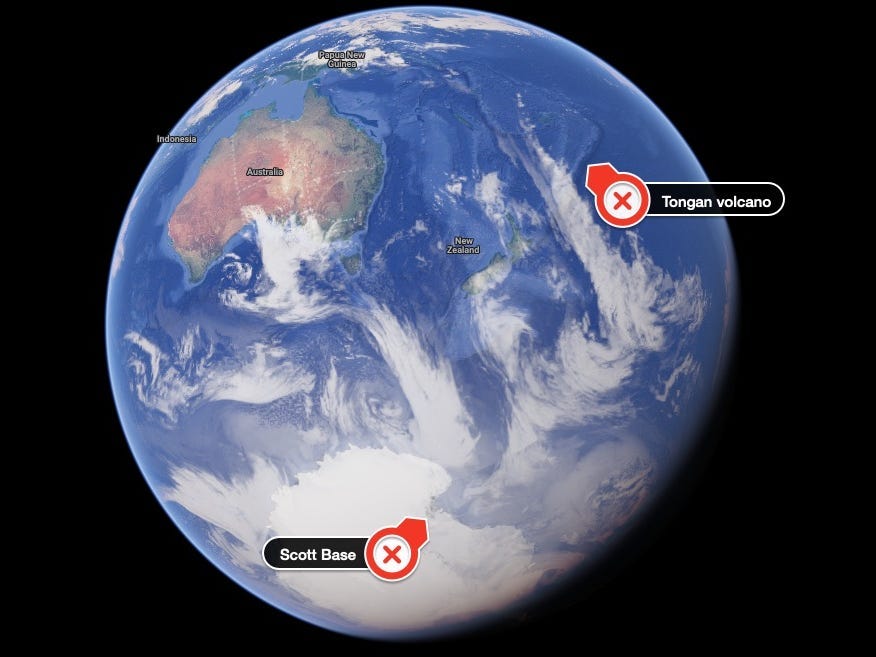
The odd color is formed by particles in the atmosphere which can travel vast distances and for long periods after a volcano blast.
A press release for New Zealand's National Institute of Water and Atmospheric Research (NIWA) explained the phenomenon.
"Stratospheric aerosols can circulate the globe for months after a volcanic eruption, scattering and bending light as the sun dips or rises below the horizon, creating a glow in the sky with hues of pink, blue, purple, and violet,"it said.
The institute tracked the aerosols above the Scott station on July 7 and found that they were abundant in skies, as can be seen in the graphic below.
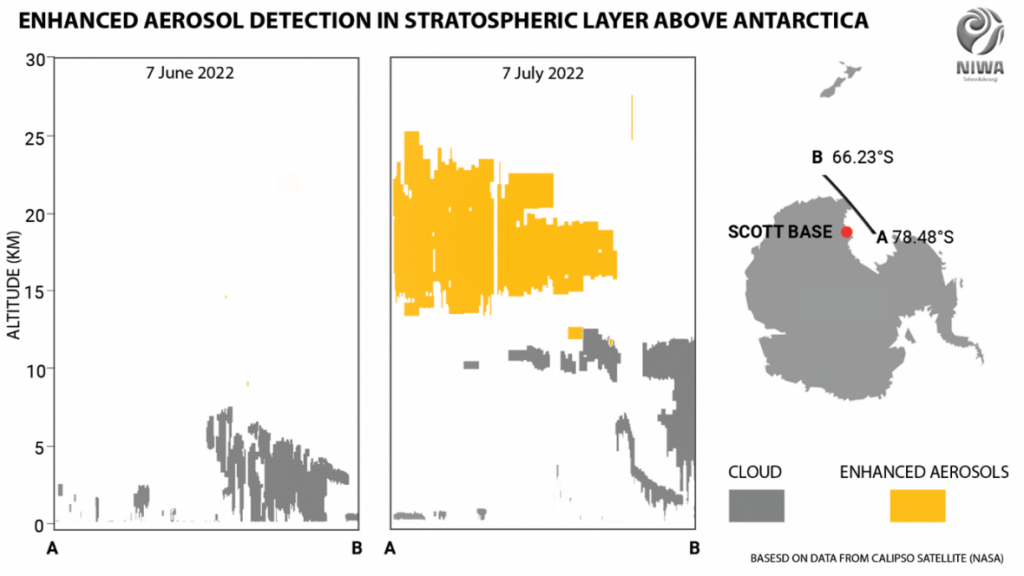
The Hunga Tonga Hunga Ha'apai underwater volcano erupted on January 15, about 20 miles from land.
The eruption shot up the highest ash plume ever recorded by satellites.
It erupted with around 10 megatons of force. It created a vast ash cloud and a tsunami that devastated nearby Tongan villages. At least three people were killed.
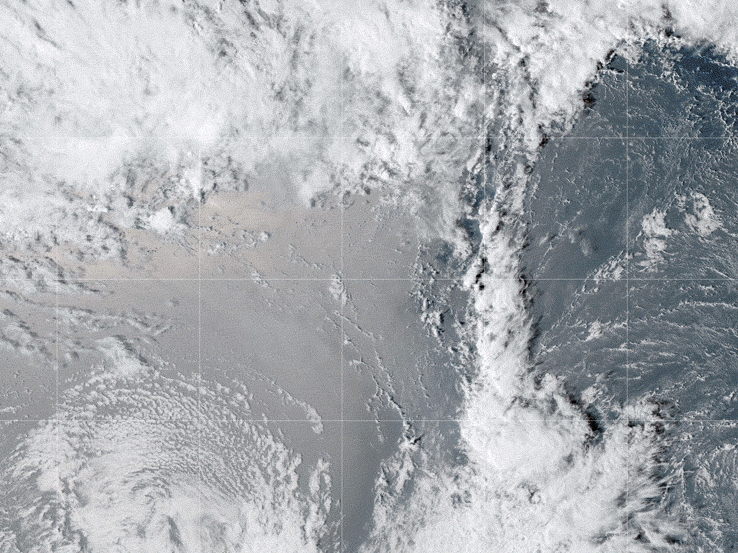
Aerosols from volcanic eruptions can linger in the sky for about two years, during which they spread out and practically cover the globe, per NASA. They reflect sunlight back into space, creating odd colors.
The peculiar color of the sky seen in twilight is known as the "afterglow" and is quite common after a volcanic eruption, per the experts in New Zealand.
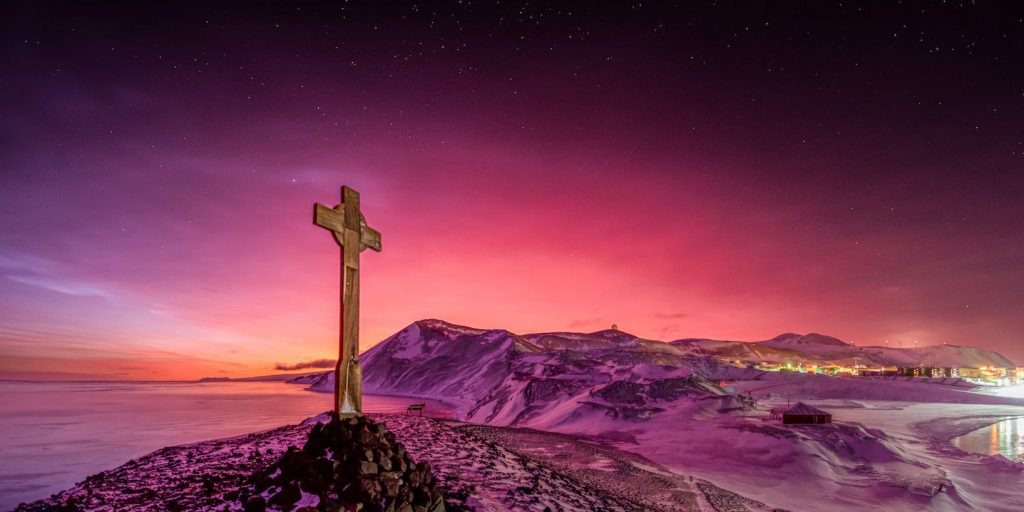
The color and intensity depend on "the amount of haze and cloudiness along the path of light reaching the stratosphere," their press release said.
People have reported seeing purple and pink skies in New Zealand and Australia over the past month, The Guardian previously reported.
